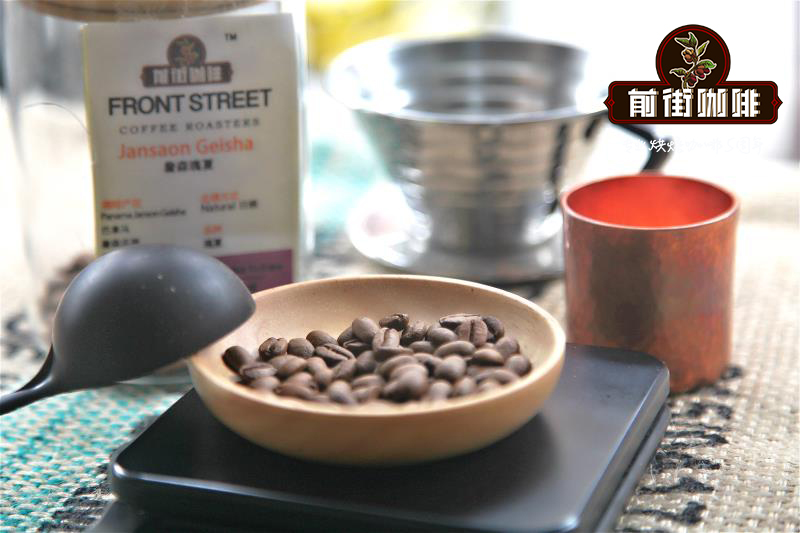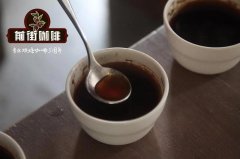What are the characteristics of Ethiopian coffee beans? introduction to the characteristics of Yega Xuefei coffee beans

Professional coffee knowledge exchange more coffee bean information please follow the coffee workshop (Wechat official account cafe_style)
Introduction to Qianjie Coffee-characteristics of Ethiopian Yega Xuefei Coffee
Located in the highland of Sidamo, Ethiopia, at an altitude of 2,000 meters, Yega is one of the highest coffee-producing areas in Ethiopia. The coffee produced here is called yirga cheffe. "yirga" means to settle down, and "cheffe" means "wetland", so it originally means "let us settle down in this wetland". The town is located on the east side of the East African Rift Valley.
Yejashafi Coffee is one of the most distinctive coffee in the world. It is an outstanding representative of African washed coffee and has always enjoyed a high reputation in the eyes of coffee connoisseurs around the world. Washed high-quality Arabica coffee, suitable for all degrees of baking, perfectly showing a fresh and bright aroma of flowers and fruits, the bean shape is also very beautiful and complete.
The popularity of Yejia Xuefei is largely influenced by the trend of boutique coffee. Its citrus flavor, with aromas of jasmine, has a unique sour taste similar to that of wine, setting a typical rebellious flavor. The traditional Italian re-roasting basically lost the sour taste of coffee, not to mention citrus and fruit, while Yejasuffi became the representative of floral fruit coffee.
Most of the coffee trees in Yega are planted in farmers' own backyards or mixed with other crops in the farmland, with little yield per household, which is a typical pastoral coffee. These mountain villages are foggy, like spring all year round, with a gentle breeze in summer, cool but not hot, rain but not damp, and no cold damage in winter, thus giving birth to this unique regional smell of citrus and flowers.
When grinding beans, you can smell the aroma of sun fruit, the sweet taste is obvious, even without milk or sugar, its unique soft flower fragrance can also leave an endless aftertaste. Some people evaluate its "coffee entrance, flowers in full bloom", quite an image. Taste carefully, there are flowers that touch the taste buds and the comfort of olfactory cells in the nasal cavity. In addition to the fragrance of flowers, its delicate thickness is like silk massage in the mouth.
Yega Sheffield Coffee refers to the Yega Sheffield Coffee produced in Ethiopia. Yejia Xuefei is the name of a local town, about 1700 to 2100 meters above sea level. This is a wetland since ancient times, the ancient saying "yirga" means "settle down", "cheffe" means "wetland", so "Yejia Xuefen" means "let us settle down in this wetland". Now Yejashafi coffee has become synonymous with Ethiopian boutique coffee.
The mountain stream village of Yejia Xuefei is foggy, like spring all year round, with a gentle breeze in summer, cool but not hot, rain but not damp, and no cold damage in winter, giving birth to a unique regional flavor of citrus and flowers. Coffee trees are mostly planted in farmers' own backyard or mixed with other crops in the field, which is a typical farm coffee.
As the hometown of coffee, thousands of years of planting history and processing tradition in Ethiopia have created high-quality washed Arabica beans. Light baking gives it unique aromas of lemon fruit, flowers and honey, mixed with soft acidity and citrus flavors. Without milk or sugar, the entrance is in full bloom, just as the fragrance of flowers and fruit promotes the expansion of taste and olfactory cells in the taste buds and nasal cavity.
END
Important Notice :
前街咖啡 FrontStreet Coffee has moved to new addredd:
FrontStreet Coffee Address: 315,Donghua East Road,GuangZhou
Tel:020 38364473
- Prev

How about Guatemalan coffee beans? Guatemalan coffee flavor and taste description
Professional coffee knowledge exchange more coffee bean information please follow the coffee workshop (Wechat official account cafe_style) the front street coffee introduction-Guatemala Coffee is located in the tropics, the northern and eastern coastal plains have a tropical rain forest climate, and the southern mountains have a subtropical climate. 2/3 of the territory consists of mountains and plateaus. Mount Tahumurko is 4211 meters above sea level, the largest in Central America.
- Next

Introduction to the characteristics of Yejiaxuefei washed Coffee
Professional coffee knowledge exchange more coffee bean information please follow the coffee workshop (Wechat official account cafe_style) Qianjie Coffee-washed Yejashafi characteristics Yirga cheffe is a small town in Ethiopia, elevation of 1700-2100 meters, is one of the world's highest coffee-producing areas, but also synonymous with Ethiopian boutique coffee. Lake Turkana,
Related
- Beginners will see the "Coffee pull flower" guide!
- What is the difference between ice blog purified milk and ordinary milk coffee?
- Why is the Philippines the largest producer of crops in Liberia?
- For coffee extraction, should the fine powder be retained?
- How does extracted espresso fill pressed powder? How much strength does it take to press the powder?
- How to make jasmine cold extract coffee? Is the jasmine + latte good?
- Will this little toy really make the coffee taste better? How does Lily Drip affect coffee extraction?
- Will the action of slapping the filter cup also affect coffee extraction?
- What's the difference between powder-to-water ratio and powder-to-liquid ratio?
- What is the Ethiopian local species? What does it have to do with Heirloom native species?

